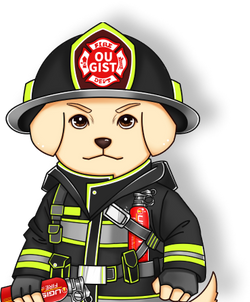Understanding different types of fires is essential for ensuring fire protection in both residential and industrial settings. One of the most common categories of fires is the Class B fire. Despite its prevalence, many people are unsure of what a Class B fire truly is, how it differs from other fire classes, and how to extinguish it correctly.

What is a Class B Fire?
Class B fires involve flammable and combustible liquids such as gas, alcohol, and petroleum greases. These materials have lower ignition temperatures, making them more susceptible to catching fire.
Differences Types of Fire
Understanding the differences between fire classes is crucial for effective fire suppression. Using the wrong method can be very dangerous, so accurate identification is critical.
- Class A fires: Involve solid materials like wood and paper.
- Class B fires: Involve flammable liquids and gases such as oils and alcohols.
- Class C fires: Involve energized electrical equipment.
- Class D fires: Consist of combustible metals like magnesium or titanium.
- Class K fires: Often encountered in restaurant settings, involving cooking oils.

Causes of Class B Fires
Preventing Class B fires starts with understanding their common causes. These fires are frequently seen in environments like chemical storage facilities, fuel transfer stations, and places where flammable liquids are stored. Common causes include:
- Petroleum-based products like gasoline and diesel
- Alcohol and alcohol-based solutions
- Oil-based paints
- Flammable gases like propane and butane
- Lithium-ion batteries
Select right fire extinguishers from the type of fire extinguishers.fire extinguisher classification is based on the grade of the fire.
Effective Extinguishers for Class B Fires
Different classes of fires require specific types of fire extinguishers. For Class B fires, several fire extinguisher types are effective:
- Carbon Dioxide Extinguishers: Remove the oxygen supply from the fire triangle. Best for smaller, less intense fires but don’t prevent re-ignition.
- Dry Chemical Extinguishers: Interrupt the chemical reaction by creating a barrier between the fuel and oxygen. Useful for Class A, B, and C fires but can be corrosive.
- Foam Fire Extinguishers: Form a foam blanket on the flammable liquid surface, cutting off the oxygen supply to prevent future flames. They are potentially messy and require careful disposal.
- Dry Powder Extinguishers: More suitable for metal fires (Class D) and not as versatile.
Precautions for Handling Class B Fires
When dealing with a Class B fire, always remember these precautions:
- Use the appropriate extinguisher: Water extinguishers can spread the fire.But Ougist water-based extinguishers can put out Class B fires in homes.
- Maintain a safe distance: Stay at least 6 to 8 feet away when using a portable extinguisher.
- Never use water: Water can spread flammable liquid fires, worsening the situation.
For larger Class B fires, or if the fire continues to spread after using an extinguisher, call your local fire department immediately. Evacuate the area and let professionals handle the fire.


